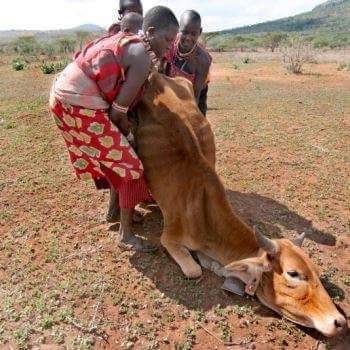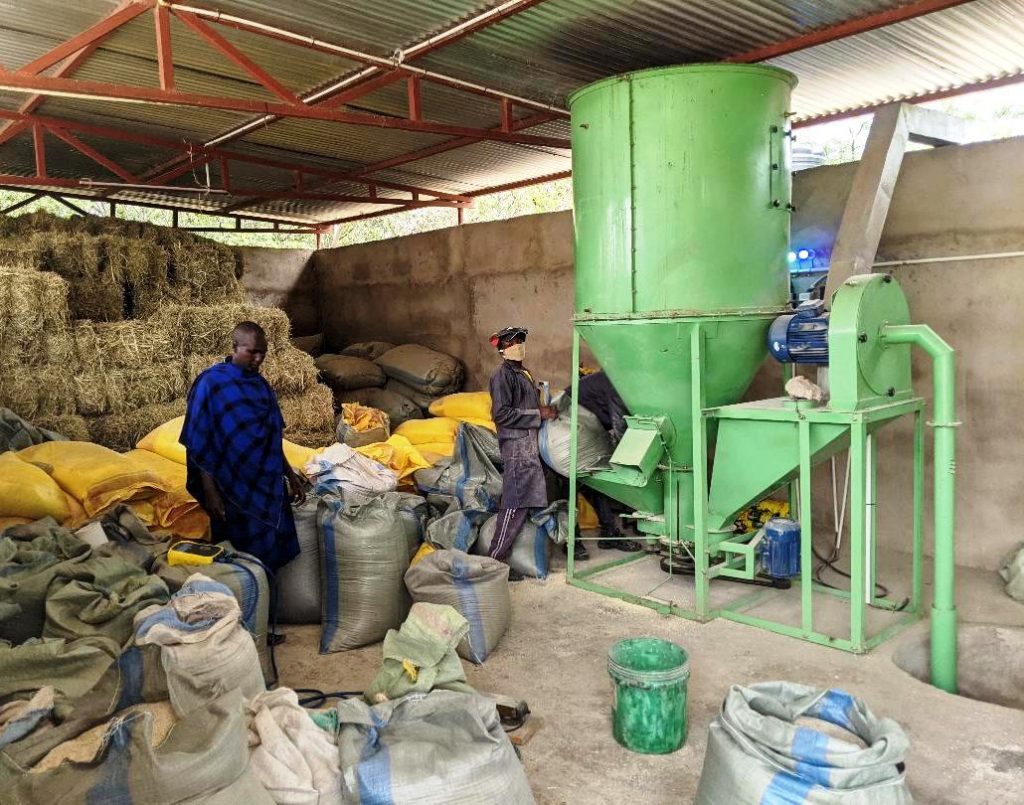Climate Change Adaptation
Climate change is here. Extreme weather with warmer temperatures and melting ice is becoming more typical. Poor rural societies with rain-dependent economies are especially vulnerable to these changes. Here in rural sub-Saharan Africa, global warming is bringing increasingly frequent and severe drought.
For the Maasai and other rain-dependent people, climate change adaptation is now an urgent and essential pathway to survival.
Our approach since our founding, as pressures and opportunities change, the International Collaborative flexibly turns to sectors and programs where action makes life better.
With the need to adapt to climate change, we continue this approach. We do not try to solve the problems of millions of Maasai and other pastoralists but rather, we aim to demonstrate the power of creative thinking.
We focus on invention to encourage the perception of needed changes to traditional practice. These adaptations allow stability in the life and economy of the people, even as the environment around them becomes less stable.
Our work with stoves, renewable solar energy, and water sanitation has always been based on good environmental and conservation principles. But climate change adaptation is more than taking care of the environment. It is confronting an environment that is out of control by using our human initiative to adapt and keep life better.
Raising livestock in a changing climate
We at the International Collaborative continue our study of
approaches to raising livestock successfully in this changing environment.
Open grazing—walking livestock miles to find grass and water— is no longer reliable. We are beginning to demonstrate the value of bringing food and water to livestock.
We established the Manyara Feedlot (link to to work with the herders to develop and demonstrate creative ways to manage cattle. During dry periods, herders in the Rift Valley bring cattle to the feedlot and pay for their care. Their market value stays high even when grazing alone could not maintain it.
Our Fodder Factory and Hay Farm provide the food for the feedlot. Additional fodder is also available for sale so that shortage of open grazing grass is not disastrous. We can’t provide these at a scale needed for millions of pastoralists, but rather, we’re demonstrating the power of creative flexibility.
Facing the rain dependence of farming
Farming is also rain-dependent. In this area, even when there is good rain, there can be just one crop per year. With rain starting and stopping without good warning, even that one crop is uncertain.
In August, 2023 we established a Demonstration Farm Project in Selela in response to our growing awareness of the severe climate change impact of rain-dependent farming.
As with grazing, the problem is too widespread for the International Collaborative to bring a solution to each farmer but again, we can create and demonstrate new ways to farm successfully in the face of climate change.
Solar-powered pumping of groundwater
One way forward is greater use of groundwater. Solar power can drive the pumps, removing dependence on diesel fuel or the national electrical grid power.
Using solar-powered pumping of groundwater requires a significant investment.
We hope to demonstrate that accessing a reliable water source and growing several rain-independent crops each year will make this investment practical.
Powering the groundwater pumping
We are experienced in solar power for homes and some commercial sites, such as clinics and sewing centers. Even so, we are challenged in this solar application, since the pump needed for bringing up the water in the borehole will be as big as ten horsepower.
That would require 15 or 20 kilowatts of power, a high DC voltage to the controlling inverter, and a lot more current than we are used to generating.
To address this, we have prepared a safe, high-power installation using large pure copper cables to link the panels, controller, and pump. The 100 panels will be mounted with spaces between them on a support erected over a 15 by 15 meter square area. This will produce the power needed, while providing a partial shade area for plants that thrive under these growing conditions.
We partitioned a six and a half acre field for different crops and crop combinations. We aim to demonstrate the nutritional and financial value for this rain-independent type of farming.
The full range of environmental actions
Using a traditional three-stone interior cooking fire
requires a lot of wood. As a result, the local bush is rapidly shrinking. Women
typically spend up to 12 hours each week gathering wood, and combined with
long-term drought conditions, woodlands are under tremendous pressure. Our
Project addresses these issues.
A single village, Eluwai,for example, loses 1.5-2 acres of firewood forest per year.
Where will the women in the Maasai bomas find firewood? In Eluwai village where the wood-gathering sites are closest, the women showed us how
almost half of their forest resources have gone since 2007, losing up to two
acres of wooded area per year.
In Losirwa, the wood is nearly gone, and forty percent of homes are now using cow dung. We are happy to discover that although our stove was designed to use firewood as fuel, it also works well with dung.
The project conserves woodlands
Each stove saves 60 kg of firewood per week, reducing deforestation. Independent study results confirm:






